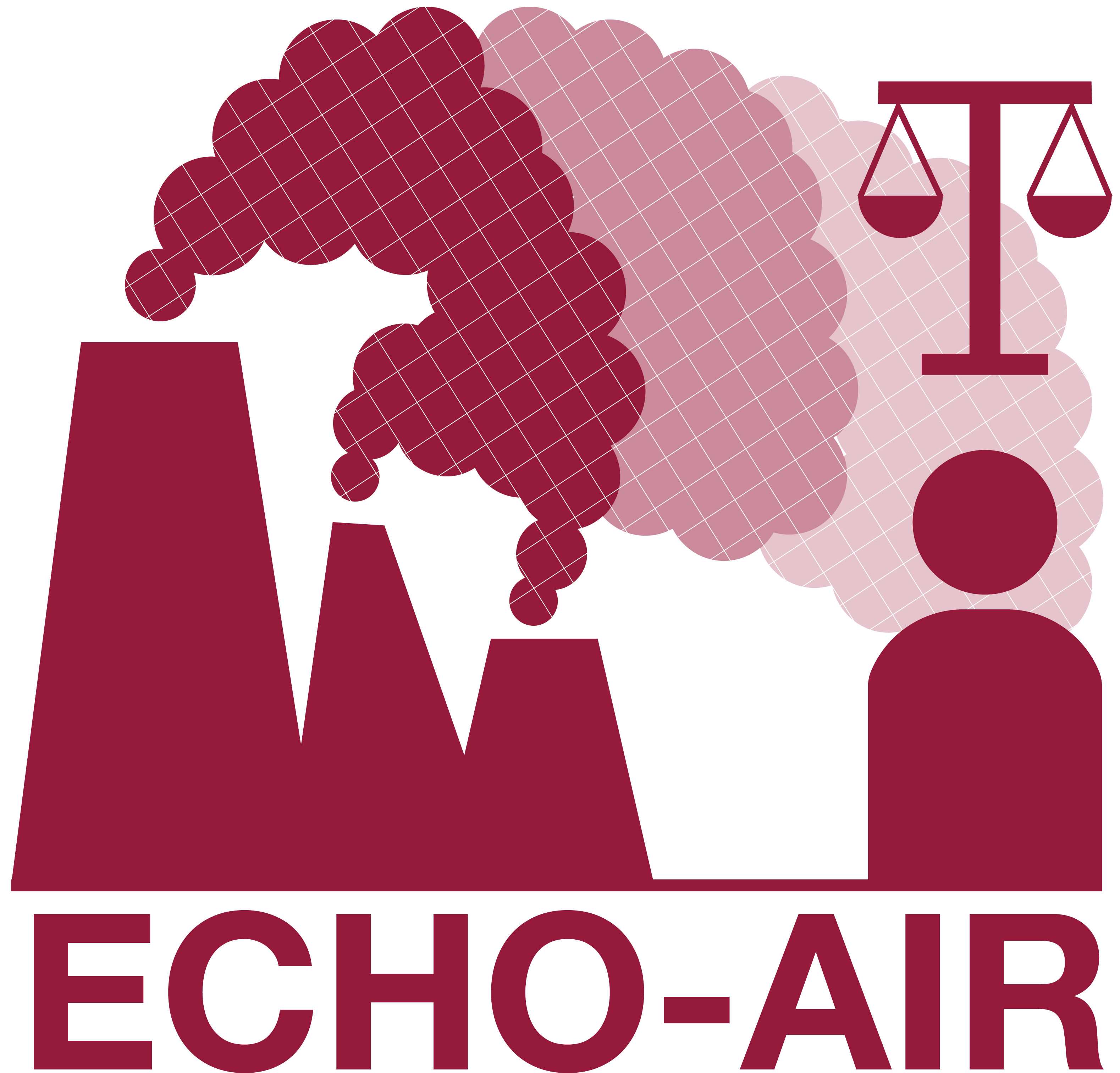
A repository of scripts used for converting emissions to concentrations and health impacts using the InMAP Source Receptor Matrix (ISRM).
Libby H. Koolik, Álvaro Alvarado, Amy Budahn, Laurel Plummer, Julian D. Marshall, and Joshua S. Apte
Last modified July 29, 2025
Purpose and Goals
The Intervention Model for Air Pollution (InMAP) is a powerful first step towards lowering key technical barriers by making simplifying assumptions that allow for streamlined predictions of PM2.5 concentrations resulting from emissions-related policies or interventions.1 InMAP performance has been validated against observational data and WRF-Chem, and has been used to perform source attribution and exposure disparity analyses.2, 3, 4 The InMAP Source-Receptor Matrix (ISRM) was developed by running the full InMAP model tens of thousands of times to understand how a unit perturbation of emissions from each grid cell affects concentrations across the grid. However, both InMAP and the ISRM require considerable computational and math proficiency to run and an understanding of various atmospheric science principles to interpret. Furthermore, estimating health impacts requires additional knowledge and calculations beyond InMAP. Thus, a need arises for a standalone and user-friendly process for comparing air quality health disparities associated with various climate change policy scenarios.
The ultimate goal of this repository is to create a pipeline for estimating disparities in health impacts associated with incremental changes in emissions. Annual average PM2.5 concentrations are estimated using the InMAP Source Receptor Matrix for California.
Documentation
This website serves as the living documentation for the ECHO-AIR model. The navigation pane on the left will help you navigate through Getting Started, Running the Code, Technical Code Details, and any other additional supporting information.
Currently, the model is configured and validated for California ISRM calculations, as demonstrated in Koolik et al. 2024.5
Development on the ECHO-AIR model is ongoing, and as such this website serves as a living document. We do our best to update the documentation as the code is updated, but we apologize in advance for any discrepancies. Please reach out if you have any questions or comments about our documentation.
Intended Uses
ECHO-AIR strikes a balance between the high spatial resolution required to assess PM2.5 exposure disparities and the complexity of air quality modeling and was designed to support California Office of Environmental Health Hazard Assessment’s (OEHHA):
- Analyses of the benefits and impacts of California’s climate policies in disadvantaged communities and to explore environmental justice disparities in PM2.5 exposure and mortality. This includes evaluation of relative changes in PM2.5 exposure and mortality between two or more timepoints or scenarios.
- Estimates of PM2.5 exposure using InMAP, a reduced complexity air quality model.
ECHO-AIR is well suited for projects investigating environmental justice issues, those requiring many modeling runs, or with limited resources to run complex air quality models. However, the ECHO-AIR tool is not a substitute for comprehensive chemical transport models; designed to evaluate absolute changes in PMd2.5 exposure and mortality; nor appropriate to apply to the neighborhood scale due to complexities in the modeling and the need for highly spatially resolved data sets.
References
-
Tessum CW, Hill JD, Marshall JD (2017) InMAP: A model for air pollution interventions. PLOS ONE 12(4). ↩
-
Tessum CW, et al., (2021) PM2.5 polluters disproportionately and systemically affect people of color in the United States. Sci. Adv. 7. ↩
-
Goodkind AL, et al., (2019) Fine-scale damage estimates of particulate matter pollution reveal opportunities for location-specific mitigation of emissions. PNAS 116 (18). ↩
-
Tessum CW, et al., (2019) Inequity in consumption of goods and services adds to racial-ethnic disparities in air pollution exposure. PNAS 116 (13). ↩
-
Koolik LH, et al., (2024) PM2.5 exposure disparities persist despite strict vehicle emissions controls in California. Sci. Adv. 10 ↩